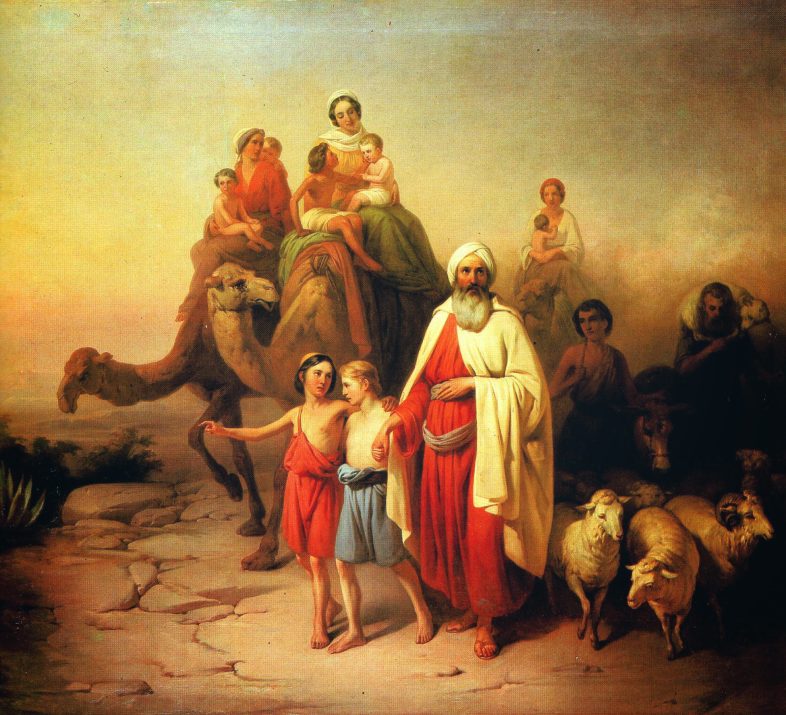The vocabulary of ancient languages is based largely on two-letter biliteral roots. Ancient Arabians in Central Arabia developed a new linguistic structure known as “triliterals” involving a certain biliteral root and the addition of a third letter either before (prefix) or after (suffix) the biliteral root. Many other daughters of Ancient Arabian followed the root of compounds but adding two, three, four and sometimes more biliteral roots in a single word. This was a linguistic road followed almost faithfully by ancient English speakers but a limited number of triliterals were added to the language.
It is there safe to begin analysing words by determining their linguistic structure. In Southern Arabia, a compound made by a biliteral root and a triliteral or a triliteral followed by a biliteral root was developed and applied to words such as Hadramawt from the biliteral roots *ḤD and *MT.
Abraham appears to be a compound of a biliteral, ab (*’B, originally *’P), and raḥam, a triliteral the biliteral root of which is *ḪM preceded by the letter ‘r’. Raḥam is popular in certain religions used or probably over-used to express a deep human trait and re-assign it to Gods. The essential meaning of *ḪM is the human body warmth. The uterus of a pregnant woman provides such warmth and care. The Gods were given the attribute to claim such care and mercy.
However, *ḪM was used indiscriminately to communicate other types of warmth including that of fire. The soot and smoke of fire can be black and the same word was used by non-native speakers to mean “black”.
Either because they lived in a hotter climate than Arabia or because their skin colour was darkish red, the word was applied to a famous tribe that still exists today in Ethiopia – the Ḥamar tribe, and migrants to southern Arabia known as Himyarites.
Two Jewish Rabbis from Medina are said by historians, such as al-Yaqubi, were commissioned by a Himyarite in Southern Arabia to write a brief religious book and elevate the king to the position of a God, believed to have been named Raḥman. Those familiar with Arabian names may recall that the article “an” is affixed to certain proper names of toponyms to reflect importance or grandeur. Examples include ‛Aad known as ‛Adnān, Yemen and Aden (‛Adan). Excluding this element, the name is Raḥm.
Dotting and diacritics were not introduced until the eight century AD. Prior to that texts were neither dotted nor diacriticked. It is therefore expected for a written form such as Raḥam to be confused with Rahm. Toponyms such as Arabia and Europe include the biliteral ab (*’B, originally *’P) “father”. Abraham, therefore, is “father Raham” or the “merciful father”.
This is the story of Applied Biliteral Etymology but there are others.
Last modified: December 30, 2022



